Broadleaf helleborine: A weedy orchid invading lawns and flowerbeds
Updated methods for combating broadleaf helleborine.

Broadleaf helleborine (Epipactis helleborine) is quickly becoming a problem for lawns and gardeners this spring and summer (Photo 1). We have had multiple samples submitted to Michigan State University Plant and Pest Diagnostics. This plant is in the orchid family, Orchidaceae, and is sometimes referred to as a “weedy” orchid. It was intentionally introduced from Europe and is spreading throughout Michigan in lawns, flower beds and along driveways. According to Voss’s "Michigan Flora," roots and seeds of helleborine obtained from New York were intentionally planted in Niles, Michigan (Berrien County) in 1891. It was noted to be widely established in the Niles area by 1919. It is not known whether any other plants discovered throughout Michigan were derived from this population.
Helleborine is a monocot that arises from fleshy roots or rhizomes. This allows for several stems to develop from the same rootstock. The leaves are alternate, parallel veined, sessile and clasp at the stem. The flowers are bilaterally symmetrical and are greenish white with a violet tint (Photos 3-4). This plant can grow up to 36 inches tall.
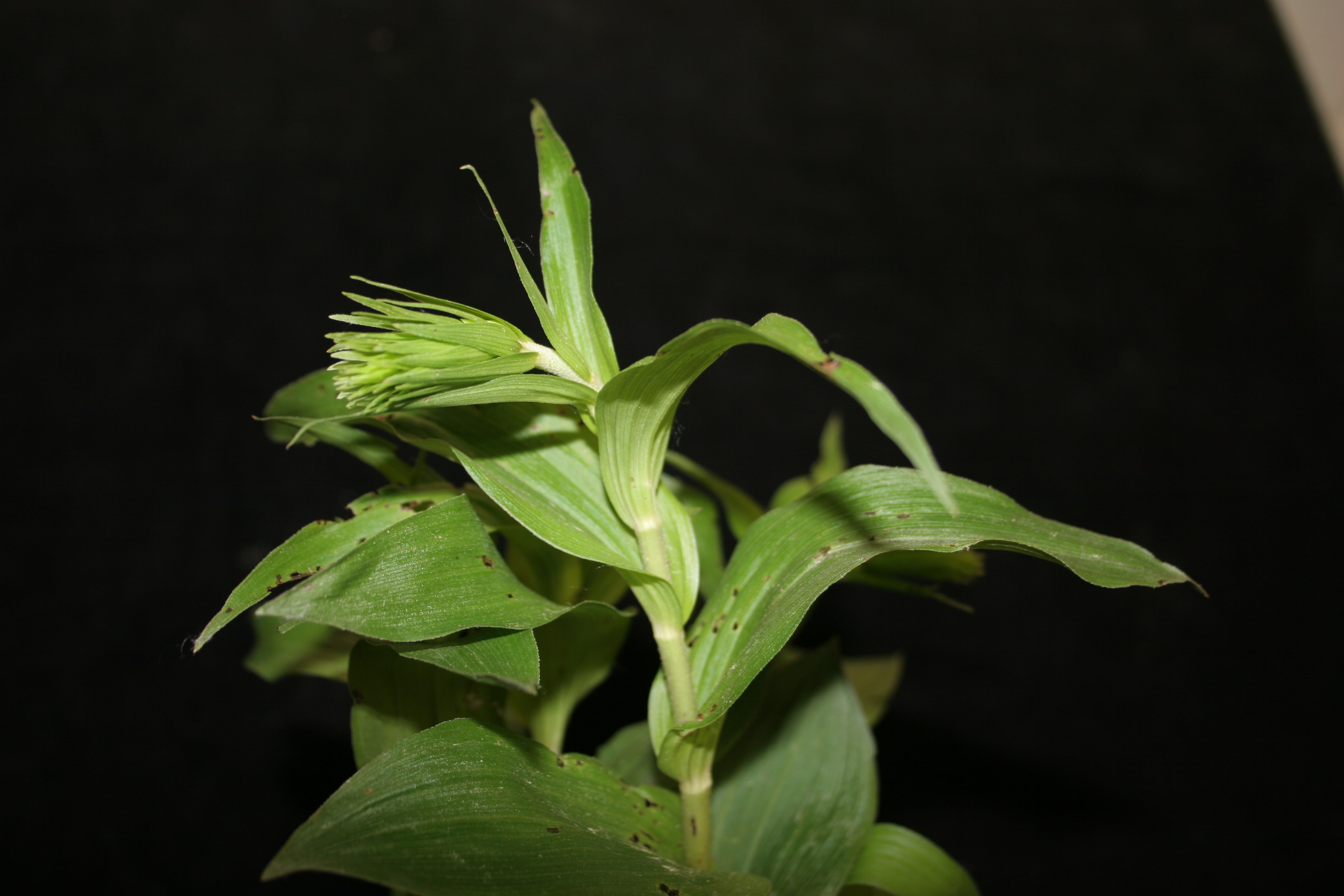
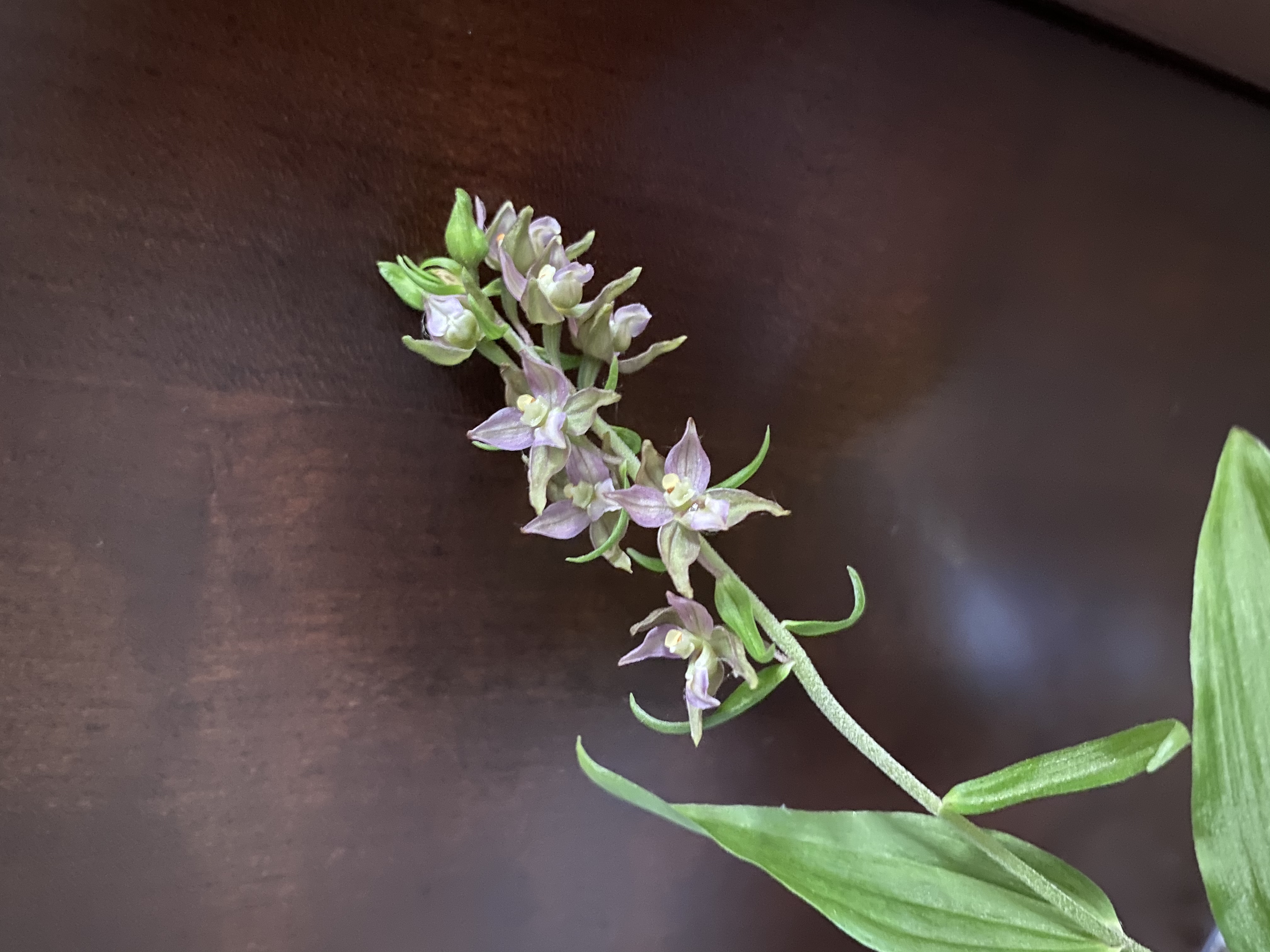
Controlling this plant is proving to be quite difficult. The best time to dig them up is when they are starting to flower, in hopes that their roots and rhizomes are at their weakest. The problem is you have to get all of the root/rhizome system, which is not an easy task (see video from MSU Extension’s Rebecca Finneran) and may require persistence.
Typical lawn herbicides (e.g., 2,4-D and dicamba) are not effective on this monocot species as they selectively target dicot species (most broadleaf species are dicots, e.g., dandelion). Spot treatment with the herbicide active ingredient sulfentrazone (e.g., Ortho Nutsedge Killer for Lawns) can be effective. This herbicide is capable of killing monocot weeds (e.g., star of Bethlehem, wild garlic, and wild onion) and tough-to-kill dicot weeds, but not cool-season turfgrass. We have found it to be most effective if you spray the helleborine immediately after mowing, so the cut is still fresh (Photo 5-7).
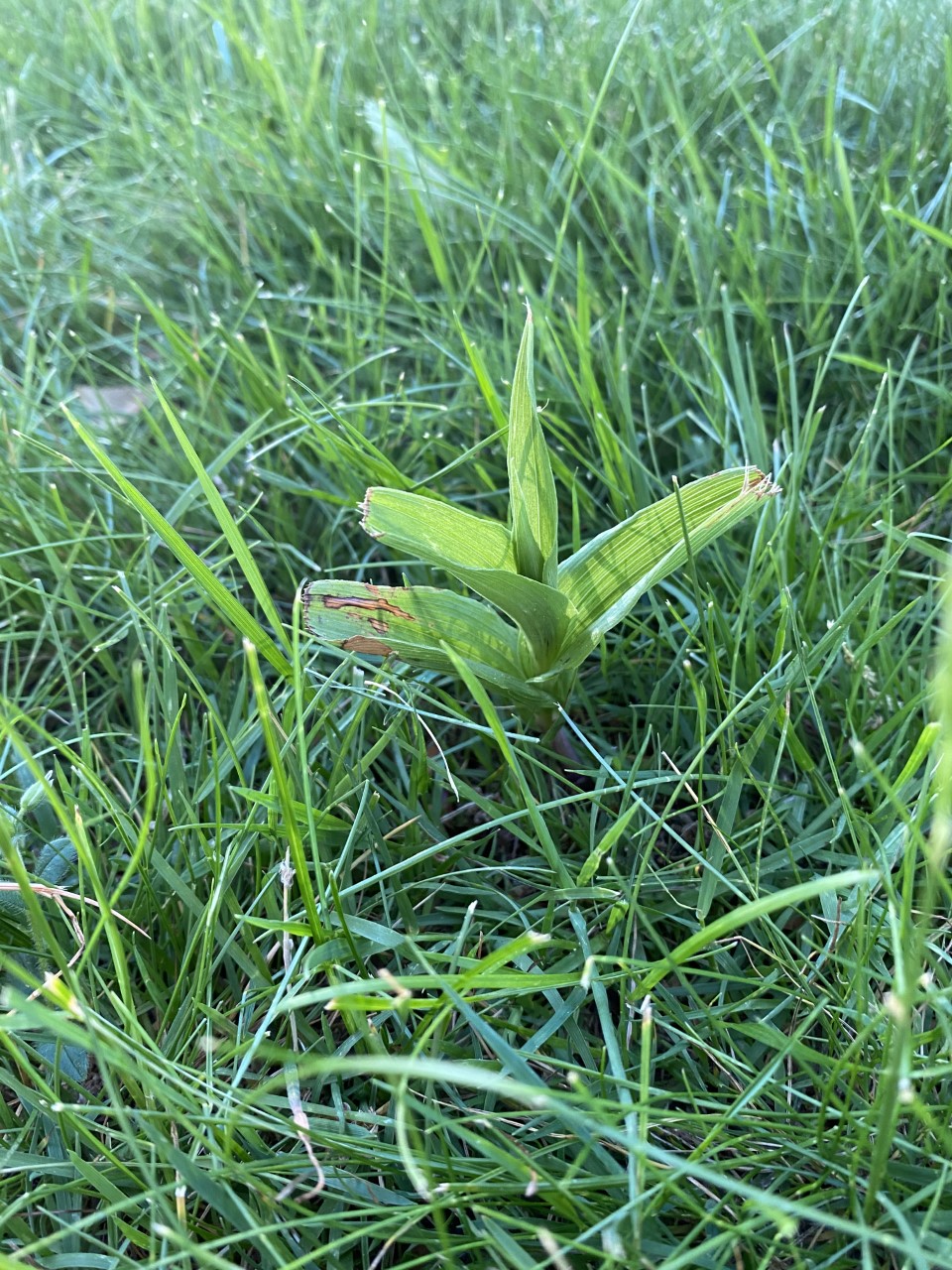
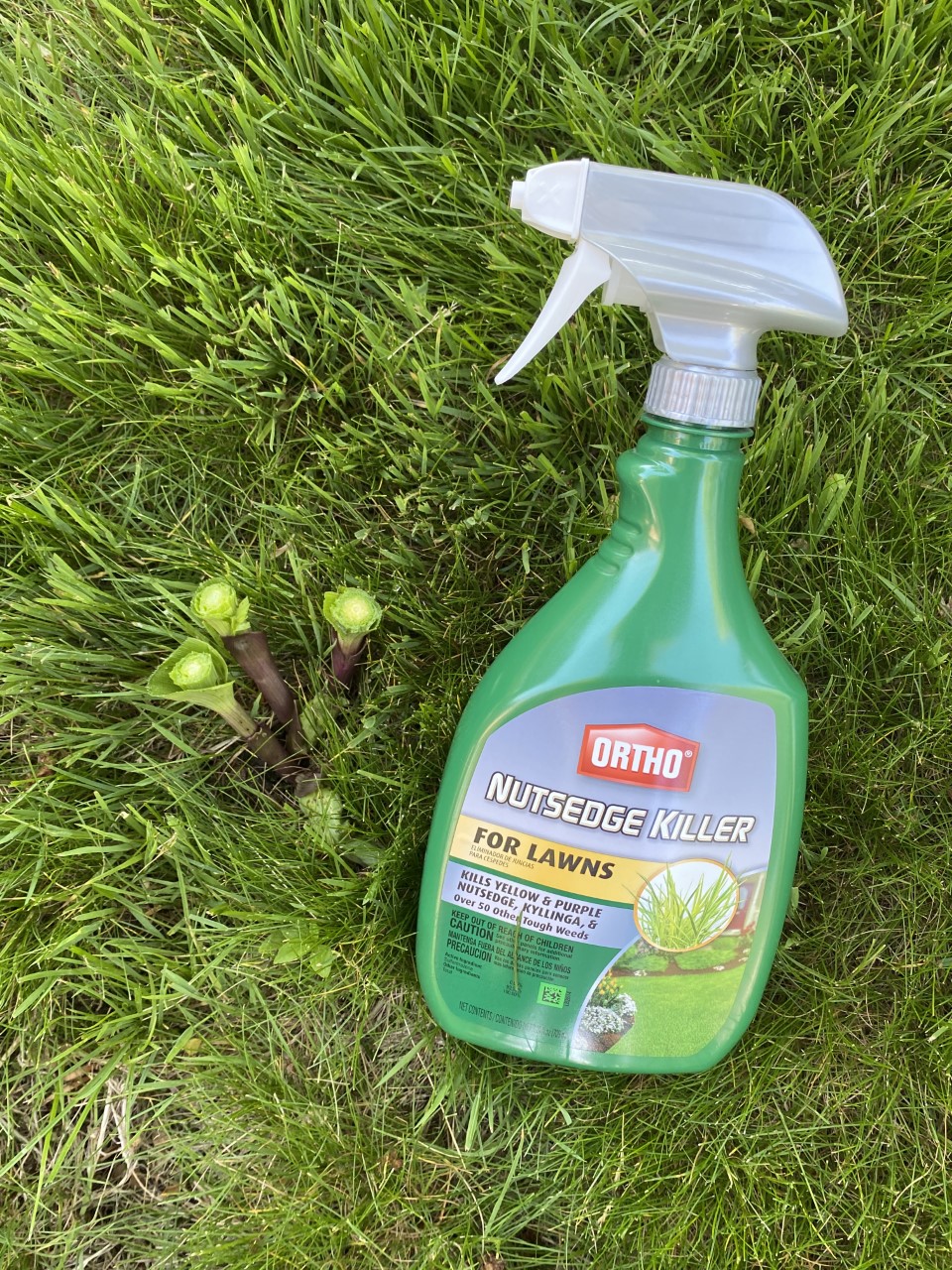
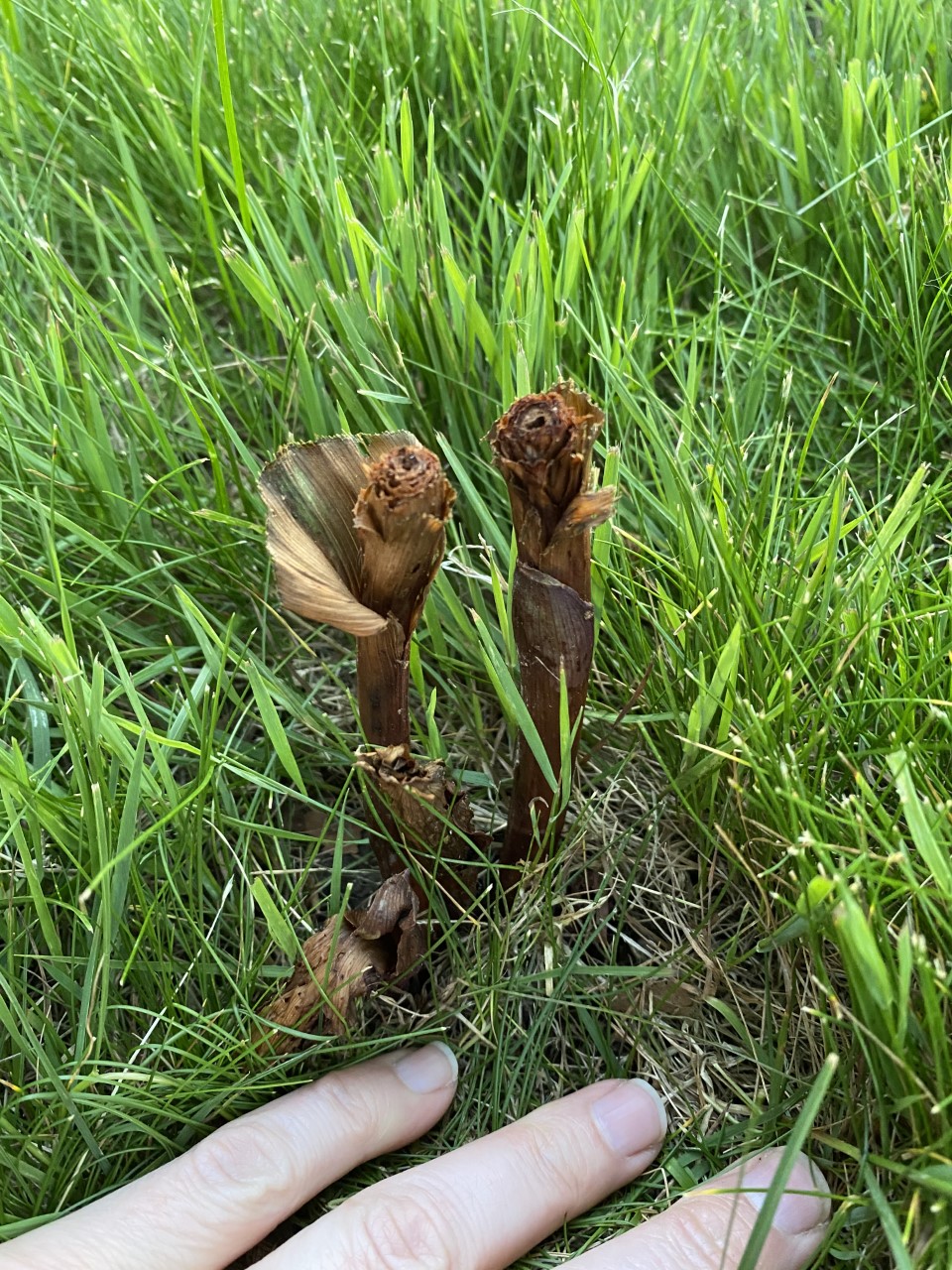
It may take multiple applications, but be sure to allow a couple weeks for the herbicide to fully work before determining if retreatment is necessary. Turfgrass can be injured if under stress at the time of application. This product is not appropriate to use in ornamental beds or vegetable gardens and should not be used in wet or occasionally wet areas. As with any pesticide application, be sure to read and follow all labeled instructions to increase efficacy and minimize environmental and personal hazards.
In an ornamental bed, controlling broadleaf helleborine with an herbicide is challenging without injuring other desirable plants. For a few helleborine plants, we would recommend cutting the plants, leaving 3-4 inches of stem, and immediately treating the cut surface with the broad spectrum herbicide glyphosate (e.g., Weed & Roundup Grass Killer Super Concentrate and generic products available at stores like Tractor Supply Company, among others). To minimize movement of this herbicide consider painting it on the cut surface with a disposable foam brush or cotton swab while wearing gloves and any other personal protective equipment listed on the label.
When using products containing glyphosate there are a few important points to consider. First, as with any pesticide, remember to read and follow all labeled instructions. Second, glyphosate is a broad-spectrum herbicide, meaning it will injure or kill other plants contacted during application, so care is needed to avoid green plant material, exposed roots, and injured bark of desired plants.
Third, glyphosate is relatively safe in the environment when used as labeled. It adsorbs strongly to soil in most cases (i.e., clay and organic matter), allowing even sensitive crops to be planted shortly after application; meaning no carry over issues are expected. Fourth, glyphosate alone can take up to 14 days to show full activity under ideal growing conditions. Retreatment of the area may be needed depending on the degree of infestation. Glyphosate is most effective for perennial control in the fall but can be applied anytime the plants are actively growing (temperatures consistently above 50 degrees Fahrenheit).
Finally, be sure that the product you choose has only the active ingredient glyphosate or glyphosate plus pelargonic acid. Products with additional active ingredients may have other unwanted effects and may delay the planting of other plants in the coming seasons. Glyphosate products are becoming harder to find. It has been replaced by other active ingredients in long standing products without much change to the overall appearance of the labels, so be sure to read the fine print detailing the active ingredients (usually on the front of the label).



 Print
Print Email
Email




